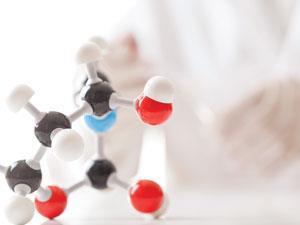Keith S Taber introduces a new series of articles to help teachers diagnose and correct common misconceptions found in chemistry education

Teachers are expected to keep up to date in relation to developments in their field. The teacher of chemistry needs to be aware of major new scientific findings and what research suggests about classroom pedagogy. One valuable source of professional development (PD) is reading articles from Education in Chemistry and journals such as Chemistry Education Research and Practice.
Courses where new ideas are explained and demonstrated can provide a powerful form of PD, allowing teachers to explore ideas with their peers and to check they fully appreciate unfamiliar new perspectives. Just as group work can be a valuable tool for challenging our students to appreciate new ideas and insights, so working with peers, under the guidance of an experienced expert, can provide an enjoyable and thought-provoking stimulus to our thinking as teachers.
Nature of learning
Of particular relevance to the classroom teacher is educational research that explores the nature of student learning – and learning difficulties – and the teaching approaches best suited to support students in their learning of chemistry. There has been a great deal of research into what are labelled alternative conceptions or misconceptions – that is where someone has an understanding of a concept area that makes sense to them, but is not in line with the scientific account. That ‘someone’ is often a student, but there is research showing that teachers themselves can often hold misconceptions.
In chemistry, laboratory phenomena (what we can actually see when we manipulate substances) are usually described in abstract theoretical terms, and then often also explained in terms of a model of the structure of the material world at a scale far too small to be directly observed. Students learn about oxidation and acidity explained in terms of molecules and ions and electrons, and often represented in a specialised symbolic language.
Flaws in the process
Yet research suggests that we can only make sense of new learning in terms of what is already familiar to us: so teachers help learners build up their knowledge starting from what is already understood and using demonstrations, models, analogies, metaphors, role play and various other pedagogic devices to help ‘make the unfamiliar familiar’. There is clearly much scope for this process to go wrong, and indeed often learners make sense of teaching in inappropriate ways – potentially without the teacher being aware that the student has a misconception. Once a misconception has a hold, it acts as a way of making sense of further teaching and so becomes reinforced.
Even graduate students hold some of the common misconceptions found among secondary level students. It seems likely that even expert chemistry teachers hold some chemical misconceptions and may even be passing them on to their own students. We tend to become aware of where we do not understand a topic, and so realise that we need to address the knowledge gap. Yet once we hold a misconception we cannot easily become aware that our understanding is at odds with the scientific account.
It is the norm to develop some misconceptions. For example, it seems likely that most secondary level students acquire the misconception that chemical reactions occur to allow atoms to form bonds and obtain full outer shells or octets of electrons. There is even some evidence that misconceptions linked to this idea may become more popular among those who study chemistry at university level!
Addressing the knowledge gap
As every student has unique background knowledge and experience, they sometimes develop quite idiosyncratic misconceptions. Teachers therefore need to be alert to clues that can help diagnose these individual differences. However, there are many misconceptions that are found to be very common and for which diagnostic probes and suitable teaching responses have been developed. Over the next few issues, Education in Chemistry will provide introductions to the research that has been done in some key topics, drawing upon PD opportunities for teachers offered by the Royal Society of Chemistry.
Further reading
- Chemistry Education Research and Practice
- V Kind, Beyond appearances: students’ misconceptions about basic chemical ideas (2nd ed.). Royal Society of Chemistry, 2004
- K S Taber, Chemical misconceptions – prevention, diagnosis and cure. Royal Society of Chemistry, 2002
- K S Taber (ed.), Teaching secondary chemistry (2nd ed.). Hodder Education, 2012
- K S Taber, Student thinking and learning in science: perspectives on the nature and development of learners’ ideas. Routledge, 2014









No comments yet